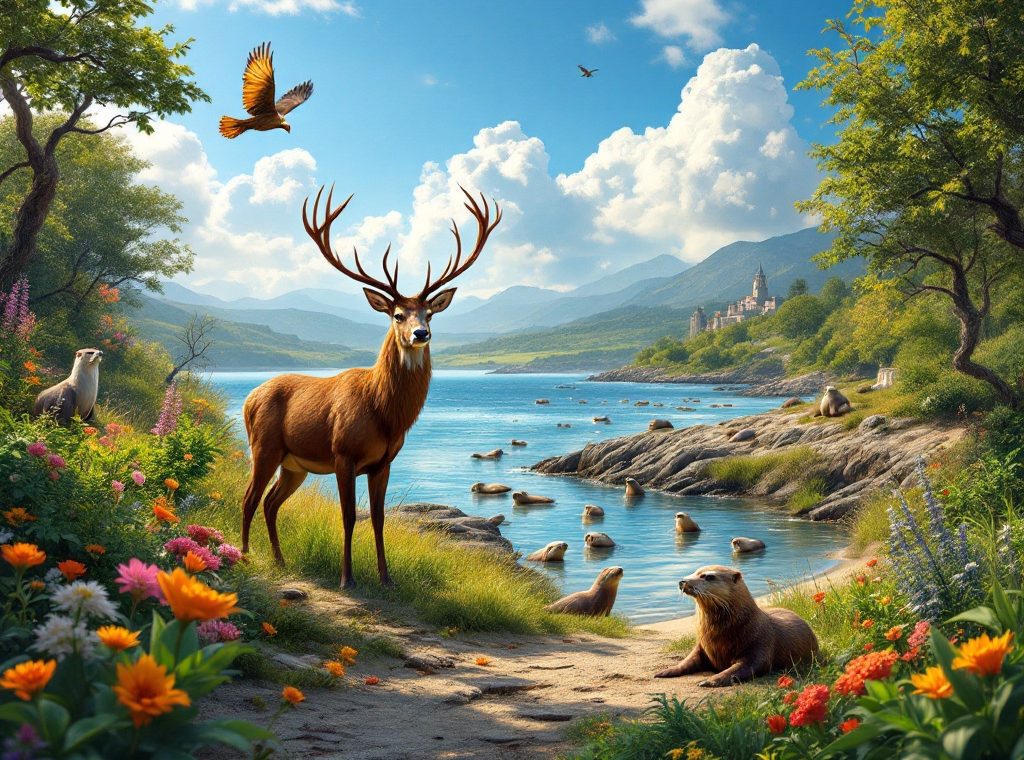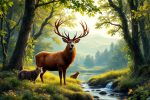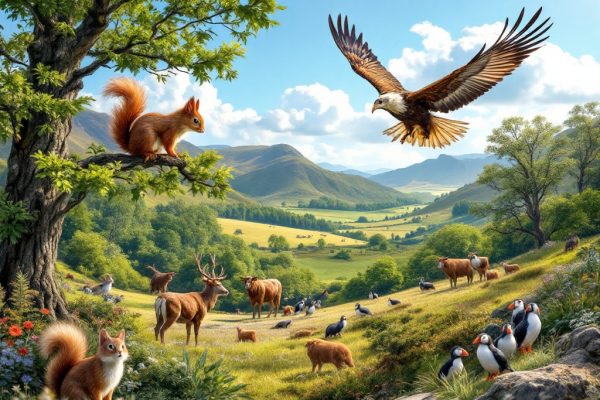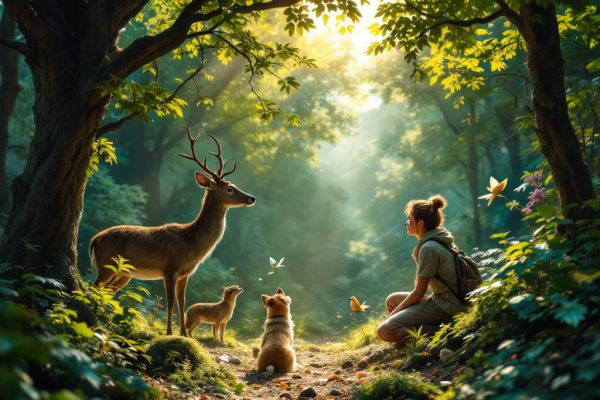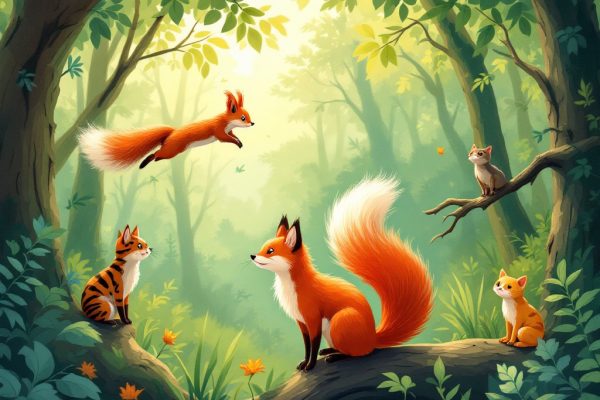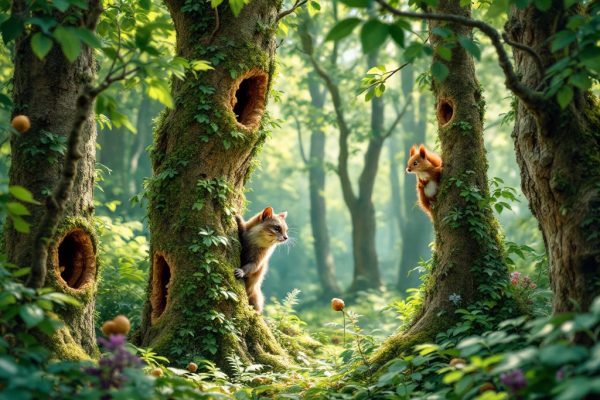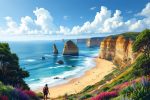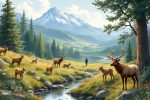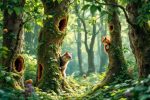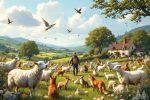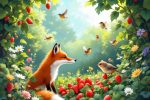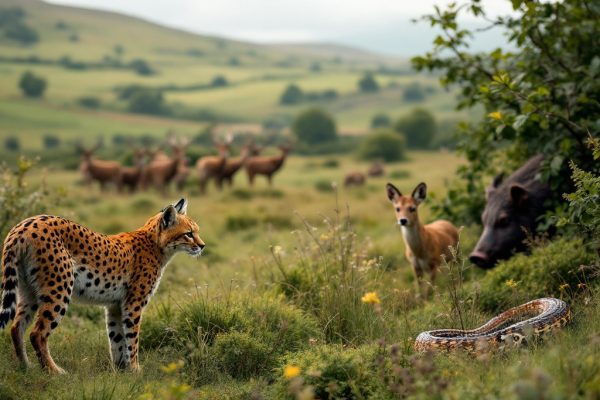Most Beautiful Wild Animals in Lothian
Discover Lothian’s breathtaking wildlife! From red deer, Britain’s largest land mammal, to the elusive Scottish wildcat, Lothian’s diverse landscapes teem with fascinating creatures. Witness golden eagles soaring above, playful otters in the waterways, and grey seals basking on the coast. Explore the vital conservation efforts protecting these magnificent animals and their habitats. Dive into this article to experience the wonders of Lothian’s natural world.
Important information
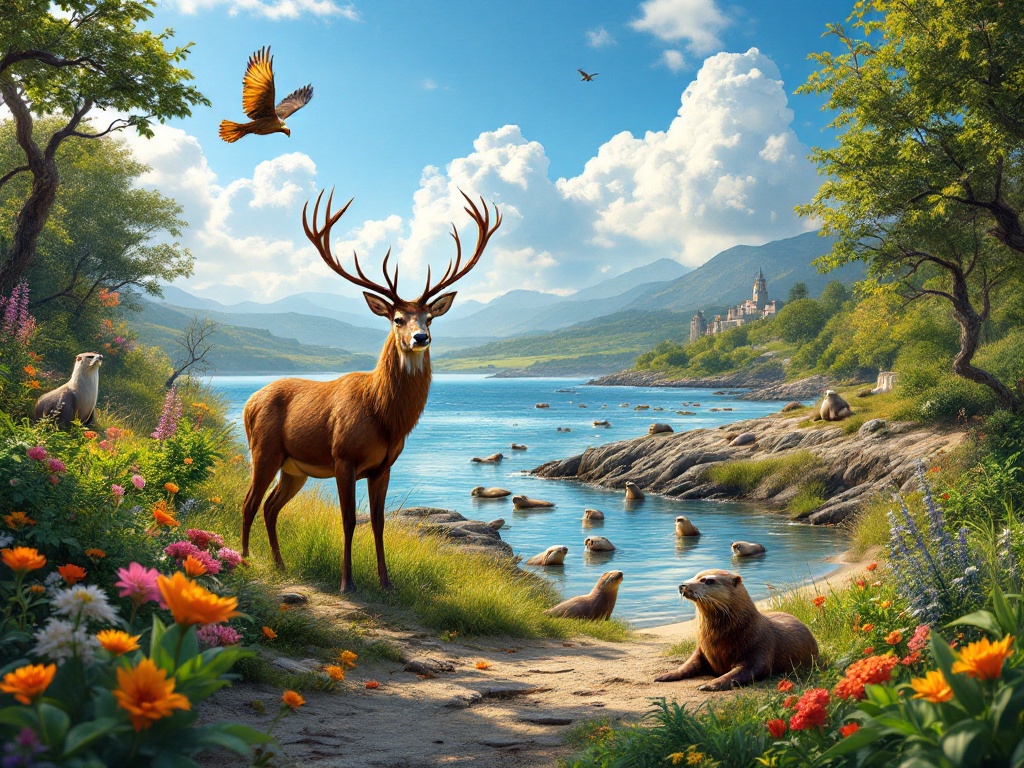
- Lothian boasts diverse wildlife, including red deer (Britain’s largest land mammal), golden eagles, otters, grey seals, and bottlenose dolphins.
- The Scottish wildcat, Britain’s last wild feline, is critically endangered due to habitat loss and interbreeding with domestic cats.
- Bass Rock, located in the Firth of Forth, houses the world’s largest Northern gannet colony.
- The Scottish Wildlife Trust plays a vital role in conservation efforts by managing nature reserves, conducting wildlife surveys, and educating the community.
- Mountain hares face challenges from climate change, as disrupted seasonal coat color changes increase their vulnerability to predators.
Introduction to the Most Beautiful Wild Animals in Lothian
Lothian is a haven for diverse wildlife. Red deer, Britain’s largest land mammal, graze in the hills and forests, while golden eagles soar above. Otters play in the waterways, and the coasts are home to grey seals and bottlenose dolphins. Kingfishers add flashes of color near rivers and lakes, and roe deer inhabit the woodlands. A multitude of birds, butterflies, and insects contribute to Lothian’s remarkable biodiversity. You might even spot a rare butterfly or a busy bee among Lothian’s natural treasures.
Iconic Mammals of Lothian
Red deer, Britain’s largest wild land animal, thrive in Lothian’s diverse landscapes, from woodlands and grasslands to uplands. Stags are easily recognized by their impressive antlers.
The Scottish wildcat, Britain’s last wild feline, is larger than a domestic cat with a distinctive bushy, ringed tail. This elusive creature is critically endangered due to habitat loss and interbreeding with domestic cats, primarily inhabiting remote forests.
Pine martens, part of the weasel family, are agile climbers with rich brown fur and a creamy throat patch. They are common throughout Scotland, including Lothian, residing primarily in woodlands.
Mountain hares are masters of camouflage, changing their fur from white in winter to brown in summer. These herbivores graze on grasses, heather, and other vegetation in Lothian’s upland and mountainous areas.
Brown hares are renowned for their speed and agility. Larger than rabbits, with longer legs and black-tipped ears, they inhabit Lothian’s open fields and grasslands, feeding on grasses and other plants.
The roe deer, a smaller deer species, changes its coat from reddish-brown in summer to grayish-brown in winter. They are frequently spotted in Lothian’s woodlands, primarily consuming vegetation.
Red Deer: Britain’s Largest Wild Animal
Red deer, Britain’s largest wild land mammal, are a vital part of Lothian’s wildlife. Stags, reaching an impressive four feet tall at the shoulder, thrive in the region’s woodlands and hills. Their striking size is complemented by majestic antlers, sometimes exceeding a meter in length. These magnificent creatures can often be spotted across Lothian, particularly in:
- woodlands,
- hilly areas,
- nature reserves, and
- parks.
Scottish Wild Cat: Britain’s Only Wild Feline
The Scottish Wildcat, Britain’s only wild cat, is also its last large predator. This elusive creature plays a vital role in maintaining the ecological balance of its habitat.
Pine Martens: Found Throughout Scotland
Agile Scottish pine martens, thriving in diverse locations like Lothian, are at home in woodlands. These adept climbers enjoy an omnivorous diet, consuming small mammals, birds, insects, fruits, and fungi for survival.
Mountain Hares: Masters of Camouflage
Mountain hares are masters of camouflage, their fur changing color with the seasons. During summer, a brown or grayish-brown coat conceals them. As winter approaches, their coat transforms to a striking white, allowing them to blend seamlessly into their snowy surroundings. This makes them virtually invisible to predators like foxes and eagles. This adaptive coat is essential for their survival.
Brown Hares: Fastest of the Smaller Animals
Brown hares are remarkably fast, ranking among the quickest small mammals in Lothian. This speed is crucial for escaping predators like foxes and eagles, and essential for survival in their exposed farmland habitat.
Roe Deer: Feeding in Woodland Areas
Roe deer are woodland herbivores that primarily consume plants. Their diet includes leaves, buds, shoots, berries, and grasses. In Lothian, they play a crucial role by dispersing seeds and shaping plant diversity. These deer also form a vital part of the food chain, providing sustenance for predators such as foxes and lynx.
Majestic Birds of Prey in Lothian
Golden Eagles, Britain’s second largest bird of prey, are a magnificent sight. Their impressive wingspan allows them to soar effortlessly above Lothian, playing a vital role in controlling smaller animal populations and maintaining a healthy ecosystem. Red Kites, with their distinctive forked tails and reddish-brown plumage, are another majestic raptor commonly seen in Lothian. Native to Britain, these birds also contribute significantly to the region’s ecological balance.
Golden Eagles: Second Biggest Bird of Prey
Golden eagles, second in size only to the white-tailed eagle in the UK, are magnificent birds of prey. Their impressive wingspan makes them powerful hunters, preying on small mammals and birds like rabbits and grouse. As a symbol of Lothian’s wild beauty, these eagles also indicate a healthy ecosystem. Despite their significance, golden eagles remain relatively few in number.
Red Kites: Majestic Native Raptors
Native to Lothian, Scotland, red kites are raptors known for their elegant flight and distinctive forked tails. These birds of prey contribute significantly to the local ecosystem.
Coastal Wildlife of Lothian
Grey seals, the larger of the two seal species found in the UK, frequent Lothian’s coastal waters. They can often be seen basking on rocks or swimming offshore.
Bottlenose dolphins, renowned for their intelligence and playful behavior, are also common sights around Lothian, particularly in the Firth of Forth. Research reveals their complex communication system of intricate calls.
The Firth of Forth is also home to Bass Rock, boasting the world’s largest Northern gannet colony. These impressive seabirds, with their bright white plumage and yellow heads, are known for their dramatic diving fishing technique, a truly spectacular sight.
Kittiwakes, medium-sized gulls, nest on the cliffs and coastal structures along the Lothian coastline, primarily feeding on fish.
Grey Seals: Larger Species of UK Seals
Grey seals, larger than common seals, are often seen along Lothian’s coast. Common seals also inhabit UK waters. These magnificent animals are essential for a healthy local marine ecosystem.
Bottlenose Dolphins: Highly Intelligent Creatures
Bottlenose dolphins, known for their intelligence, frequently play along Lothian’s coast. This playful behavior is a common sight.
Gannets: Returning to Bass Rock
Gannets return to Bass Rock in late January, constructing large nests in close proximity. This signifies a major shift in Lothian’s wildlife, marking a crucial seasonal event.
Kittiwakes: Medium-Sized Gulls
Lothian’s coastal cliffs provide nesting grounds for kittiwakes, a medium-sized gull with a gentle appearance. These birds play a crucial role in the region’s diverse ecosystem and contribute significantly to its rich biodiversity.
Conservation and Wildlife Protection in Lothian
East Lothian champions the protection of endangered species and their diverse habitats, from coastal shores and inland forests to marshes, heathlands, and vital wetlands. These environments teem with life, supporting seabirds, marine creatures, deer, foxes, amphibians, and a wide array of bird species. The Scottish Wildlife Trust is instrumental in these conservation efforts.
A key partner, the Scottish Wildlife Trust restores habitats and educates the community. They also manage nature reserves and conduct wildlife surveys.
By engaging local communities and promoting sustainable practices, they strive to preserve Lothian’s rich biodiversity, ensuring healthy ecosystems for generations to come and encouraging responsible wildlife observation.
Endangered Species and Their Habitats
Britain’s sole wild feline, the Scottish wildcat, is critically endangered. Habitat loss and interbreeding with domestic cats are the primary threats to their survival.
Mountain hares, known for their camouflage abilities, face challenges due to climate change. The disruption of their seasonal coat color changes makes them more susceptible to predators.
Protecting diverse habitats is crucial for the survival of many Scottish species.
- Woodlands are essential for roe deer.
- Coastal areas are vital for grey seals.
Organizations like the Scottish Wildlife Trust play a key role in these conservation efforts. They work tirelessly to protect these at-risk species and make a real difference.
The Role of Wildlife Charities and the Scottish Wildlife Trust
Wildlife charities are essential for protecting Lothian’s diverse wildlife. For example, the Scottish Wildlife Trust manages nature reserves, conducts important research, and promotes policies that benefit wildlife. These groups also restore habitats, monitor species, and offer educational programs. This work protects endangered species and their habitats in Lothian.

